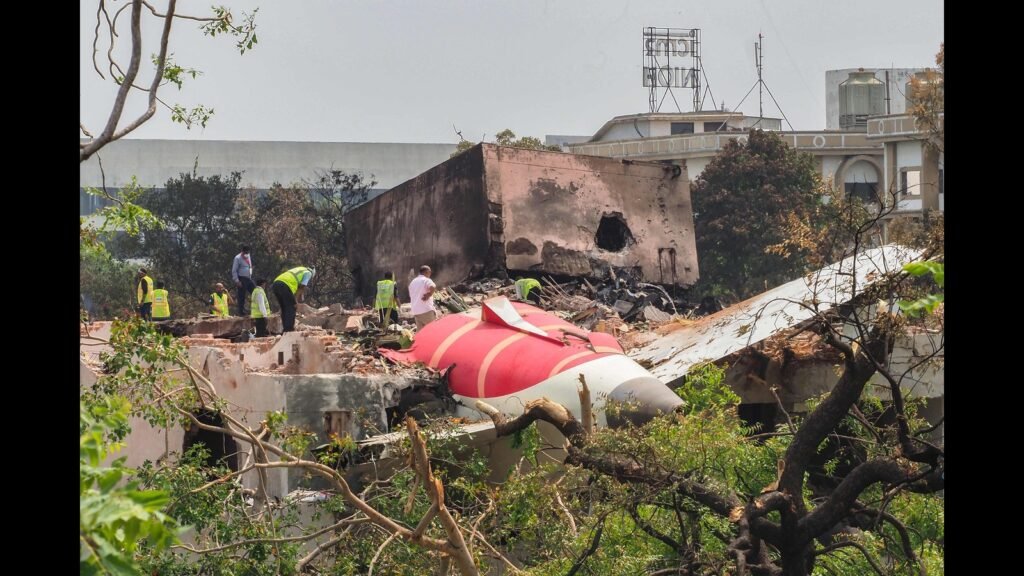
The Air India Flight AI-171 Tragedy has Reignated Concerns Around Safety Oversight, Emergency Handling and Regulatory Transparency in India’s Aviation Sector. While Investigations are ongoing, Early observations provides insights that merit the attention of industry and policymakers.

Video Footage Showed a plume of dust kicked up as the aircraft became airborne, an unusual sight during during the normal take -off. The sole survivor’s account says hes a loud bang, raising the passibility of an engine malfunction. In a normal situation, the aircraft would have taken a lot less runway length to get airborne using the powerful ge trent engines. The stress on the crew to manage an emergency during a critical phase of flight would have increased considerable.
Another Concern is that Landing Gear Remained Extended during the Climb. Lending the gear down significantly Reduces Climb Performance, Especially Critical If Thrust is Compromised. Whether this was due to workload saturation, distraction, or checklist Omstion remains to be seen. However, it illustrates how a high-stress environment can interfere with routine procedus, even in a modern cockpit.
It is essential to avoid Speculation and Await Official Findings. Still, The Pattern Emerging Here Aligns with Known Risks: Multiple Stressors Occurring Close togaTher Can Overwhelm Human Capacity and Lead to Omissions. This points to the importance of Robust Emergency Training and Real-Time Support Systems.
Why the latest icao state safety briefing claims zero fatal accidents in India over the last five years, The Tragic Air India Express Crash at Kozhikode in August 2020, which Claimed Claimed Claimed Claimed A Different Story – One that cannot simply be buried under statistical oversight. This discrepancy rayses Concerns About Whtherres Safety Data Accurately Reflects Operational Realities.
The absence of such a significant accident, one involving fatalities, a wide-body aircraft, and international attention, from India’s Safety Narraty Is Trubling. It sugges that a focus on meeting numerical targets may obscure critical Lessons. Although India Claims Level 4 Implementation of its state safety program (SSP), its SSP Foundation Value Remains Unreported. This gap, coupled with the Lack of Transparent Debate or Reform Folling The Kozhikode Crash, Sugges the Mechanisms for Identifying and Mitigating Risk May Not Function with.
India’s Continued Growth in Aviation must be matched with an equally strong commission to a safety culture based on openness, Accountability, and Learning, Selective reporting or Focusing On Focusing On Focusing On: Indicators Risks Fostering a False Sense of Security.
The AI-171 Incident is a timely reminder that aviation safety extends beyond infrastructure and certification. It is about the readiness of systems and people to respond when things don’t go as planned. For Airlines and regulators alike, this is an options to revisit crew Resource Management Protocols, Scenario-Based Training, and Post-Incident Learning Frameworks.
As reflected in ICAO’s effective implementation score, India has improved its safety oversight systems over the Years. However, Sustained Progress Depends Not only on Audits and Metrics but on Acknowledging Gaps and Acting on them without delay.
For a nation with global aviation aspirations, the foundation must buy on more than compliance – it must rest on Trust, Accuracy, and Continuous Learning. As the Investigation Into AI-171 Proceeds, The Focus must Remain on Identifying Actionable Lessons and ENSURING they lead to meaningful change.
We can only say that safety is not just promised, but truly practiced.
Amit Singh has been associated with the aviation industry for three decades and is a trustee of safety matters foundation, an ngo. The views expressed are personal.




